A best wireless routers are the most important component of a local network infrastructure. However, most users do not pay due attention to it, settling for the device that their Internet service operator places on them. It is a mistake because they are usually quite basic models without sufficient performance, management and security features to take full advantage of the contracted rate. Or to bring the coverage of the Wi-Fi network to all parts of the home with guarantees.
Taking into account the importance of these devices, which are the ones that allow us to access the Web and Internet services, and open the door (and take care of the passage of strangers) to our digital home, it is highly recommended to make an additional investment in a good wireless router with which to improve and / or expand the possibilities of our network.
And it is that the number of devices connected to home networks has increased exponentially in recent times, even more so in the last year where we have had to confine ourselves to stop the COVID pandemic and the -generally poor- network infrastructure has had a hard time simply to keep a video conference in shape. And let’s not say functions such as online multiplayer game or multimedia streaming through increasingly collapsed Wi-Fi.
In addition to the desktop computers generally connected by cable, we must count the tablets and laptops that also abound in any home, without forgetting that each member of the family today has -at least- one smartphone. Add smart TVs, streamers, wearables, personal assistants or consoles and you will have a dozen permanently connected devices at home without realizing it.
And let’s not talk now if you have gotten into the world of home automation, digital home and Internet of Things devices because the number will have skyrocketed when connecting from the fridge to a lamp, passing through the cup in which you drink coffee . Perhaps we are not aware, but all this is handled by a single device and in many cases there is no room for more.
How to choose the best wireless router for long range
It’s easy to get lost in the complexity of the technology jargon and existing networking standards. On a practical level there are three key questions to answer. One is the speed that the router must be able to handle depending on the Internet connection that we have contracted and another is the coverage that we need to cover in a given home, both in physical space and in the number of devices that will be connected.
The third key is common to any electronic device and refers to the amount of money we are willing to invest, valuing the relationship between characteristics and price of each model. Because there are quite a few price differences as you will see in the selection of offers. If the above is general, the detail is much more extensive. We review the most important.
WiFi
The capacity of wireless local area networks that you will see highlighted as WLAN is one of the most important sections to assess in a wireless router. They all use the general 802.11 protocol, but vary according to the versions, more advanced as the standard has been improved and finally the responsible organization has standardized by introducing simplified generational names that should appear in the names of devices, manuals and descriptions of the devices. products and that are specified in:
- Wi-Fi 6 → 802.11ax
- Wi-Fi 5 → 802.11ac
- Wi-Fi 4 → 802.11n
- Wi-Fi 3 → 802.11g
- Wi-Fi 2 → 802.11b
- Wi-Fi 1 → 802.11a
In practice, the entire offer of new models offers Wi-Fi 5 or the most advanced and innovative, Wi-Fi 6. The first must be sufficient for a typical home with contracted ADSL or fiber Internet speeds below 1 Gbps and that do not require the maximum connectivity that several users need for multimedia streaming and / or online gaming, surely the tasks that they occupy the highest bandwidth together with downloads and use of torrent networks.
Those that support Wi-Fi 6 offer great improvements over the previous one in performance, capacity to handle connected devices and other advantages that we have been commenting on. They are intended for users with rates of 1 Gbps or higher or those seeking the most advanced features for WLAN. The last approved standard, 6E, is not yet deployed and the truth is that client devices with support for Wi-Fi 6 are still scarce. There are appreciable price differences between Wi-Fi 6 and 5 routers. You will have to assess what interests you the most.
Wi-Fi bands
Don’t buy any wireless router that doesn’t offer support for at least two radio bands. The two used in Wi-Fi 5 are 2.4 GHz and 5 GHz. The 2.4 GHz band operates at a lower frequency and offers a greater range (reaches more distance) because it has a greater ability to penetrate walls and other structures. However, it is super saturated because it is used by many devices, including Bluetooth connections.
The 5 GHz band is less crowded and offers significantly higher performance with minimal signal interference. By contrast, it has a shorter range than the 2.4 GHz band. Most routers offer dual band and allow the user to assign each of the radio bands to specific clients and applications, easing the load on both bands.
The most advanced ones have support for triple band, one of 2.4 and two connected to 5 GHz configurable for different tasks. It is common to see labels such as AC1200, AC1750, AC3200, etc. This designates the theoretical maximum speed of the router in Mbps adding the throughput on all bands. In the case of Wi-Fi 5, the theoretical maximum speed is 5,400 Mbps.
Wi-Fi 6 adds to the previous ones a third band of use, that of 6 GHz, achieving a greater range of the available radio spectrum , greater number of channels, less network congestion and with it (and other technologies) a speed much higher than it can theoretically reach levels close to 10 Gbps. A tremendous performance that can rival that of wired networks. We will wait to see how it becomes concrete because, as we said, this type of infrastructure is still very green.
LAN
A wireless router must also have Ethernet ports to connect by cable to equipment such as desktop computers, NAS or those required by the user. Also to connect the operator’s router, which in the case of fiber providers must be maintained to power the second, whether it is used as the main one in neutral or complementary router formats such as Wi-Fi extenders or similar.
The router must have at least four 10/100/1000 (gigabit) Ethernet ports . If you need higher performance, you can purchase routers that support link aggregation. This feature uses two gigabit Ethernet LAN ports to provide higher throughput (up to 2 Gbps). It also provides a failsafe system if a LAN connection fails and can be used to load balance network traffic.
The most advanced routers can offer support for wired networks 2.5 and up to 10 GbE, although they are usually reserved for business areas, we see them in the high-end consumer range. In all cases, the router’s LAN ports can be extended by switches as long as we have the possibility of connecting them by cable.
Other Featured Features of wireless routers
MIMO: Technology Multiple Input Multiple Output is one of the important in any Wi-Fi router 5. This technology uses multiple antennas to send and receive up to eight spatial streams, resulting in improved performance. MU-MIMO downstream is designed to provide bandwidth to multiple devices simultaneously rather than sequentially and this means that up to four clients can have their own data streams instead of waiting to receive data from the router. Wi-Fi 6 also offers MU-MIMO transmissions, but improved since it has both downlinks and uplinks.
USB: Almost all routers offer additional USB ports that are used to connect external devices and share them on the local network. The most common are printers or external storage equipment to use them as if they were NAS and to be able to share files on the network. It is not essential in a wireless router, although it can always come in handy.
Antennas: Many routers look like ‘alien spacecraft’ from the number of antennas sticking out of them. Although they can also be internal and in some you will not see a single one of them since they are inside, these external antennas are usually high gain and are intended to improve Wi-Fi coverage. Generally, the more the merrier, but it depends on their quality. There are models that offer them removable and can be connected before specialized third-party manufacturers with greater reach.
Firmware and software: An important section for advanced users who seek total control and the maximum possibilities of their network. They are third-party developments that add greater possibilities than the official ones that are delivered by the manufacturers. They are not officially supported, but their installation is worth it as long as they are supported by each model. We highlight three of the best known, DD-WRT, Tomato and AsusWRT Merlin, a variant of the official firmware of this provider.
Related to the above, point out other functions of interest that can be managed in an advanced wireless router such as:
- Security: All routers have security systems to prevent access to the router configuration and also to the Wi-Fi network protected by the WPA protocol with the v3 version as the most advanced. WPA-Enterprise offers an additional level of security, but requires a Remote Authentication Dial-Up User Service (RADIUS) server to authenticate each client. It is worth investing additional time in the security of the router.
- QoS (quality of service) by which the user can decide which applications and clients have priority on the network, to guarantee transmission functions, on-line games or videoconferencing systems if you are working at home.
- Parental control: They limit content that is not suitable for minors in the household or manage hours and days of access to the network through blocking systems that can be alphanumeric keys or a combination of keys, which are managed by the legal representative.
- WPS: A Wi-Fi Protected Setup (WPS) router that allows you to add compatible devices with the push of a button on the router and on the device to add it to your network.
- Mesh networks: “Mesh” networks facilitate wireless communication by adding the two topologies of wireless networks and specifically, allow network cards to communicate with each other, regardless of the access point.
- Guest network: An additional network separated from the main one that allows use by third parties while maintaining security. It has an SSID identifier and passwords different from the main one.
- OFDMA: Improves overall performance by dividing Wi-Fi channels into sub-channels, allowing up to 30 users to share a channel at the same time.
- Target Wake Time (TWT): It is designed to reduce power consumption by allowing devices to determine when and how often to start sending and receiving data.
- IPv6: It is a 128 bit scheme that will offer an (almost) infinite number of IP addresses. Most of today’s routers have built-in support for IPv6 addressing, but it’s a good idea to check if you want to be ready for a mandatory transition as the ones available are IPv4 running low.
Wireless router, selection of offers
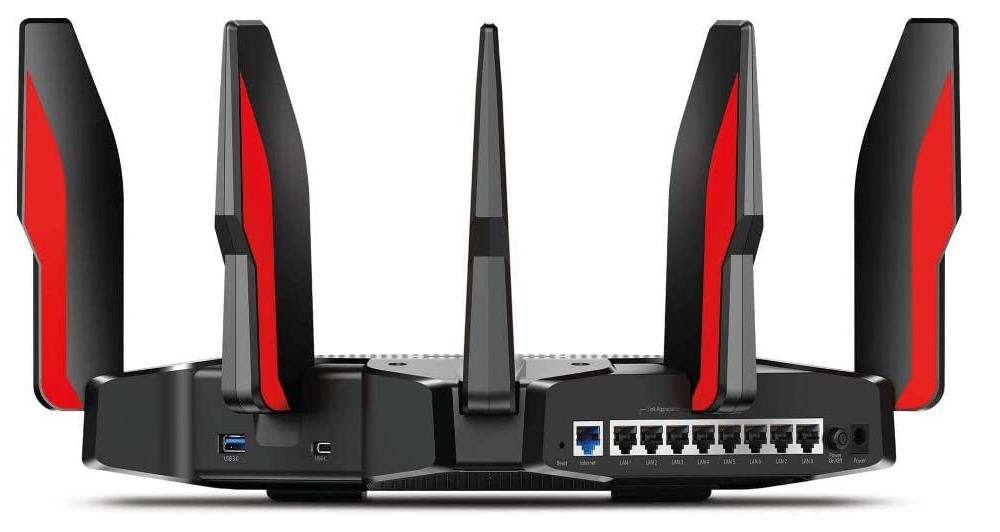
If you have come this far, you will have seen that there are many aspects to assess to select the best device, although in general, network infrastructure providers offer everything you need, good build quality, customer support and most of the technologies that we have seen above. Those that support Wi-Fi 6 are generally more expensive, but are better prepared for the future, while those with Wi-Fi 5, cheaper, still have the capacity to sustain most networks at a good level. You will have to assess according to your needs. This type of equipment will last you many years and as in any electronic purchase there is the virtue.
We select some of the best wireless routers or those that we consider to be of the most interest in terms of performance / price, including the main manufacturers. Any of them, as the main or additional router used by the Internet service operator, will be a great option to improve the performance of your local network.
Best Wireless routers for home network
ASUS RT-AX89X
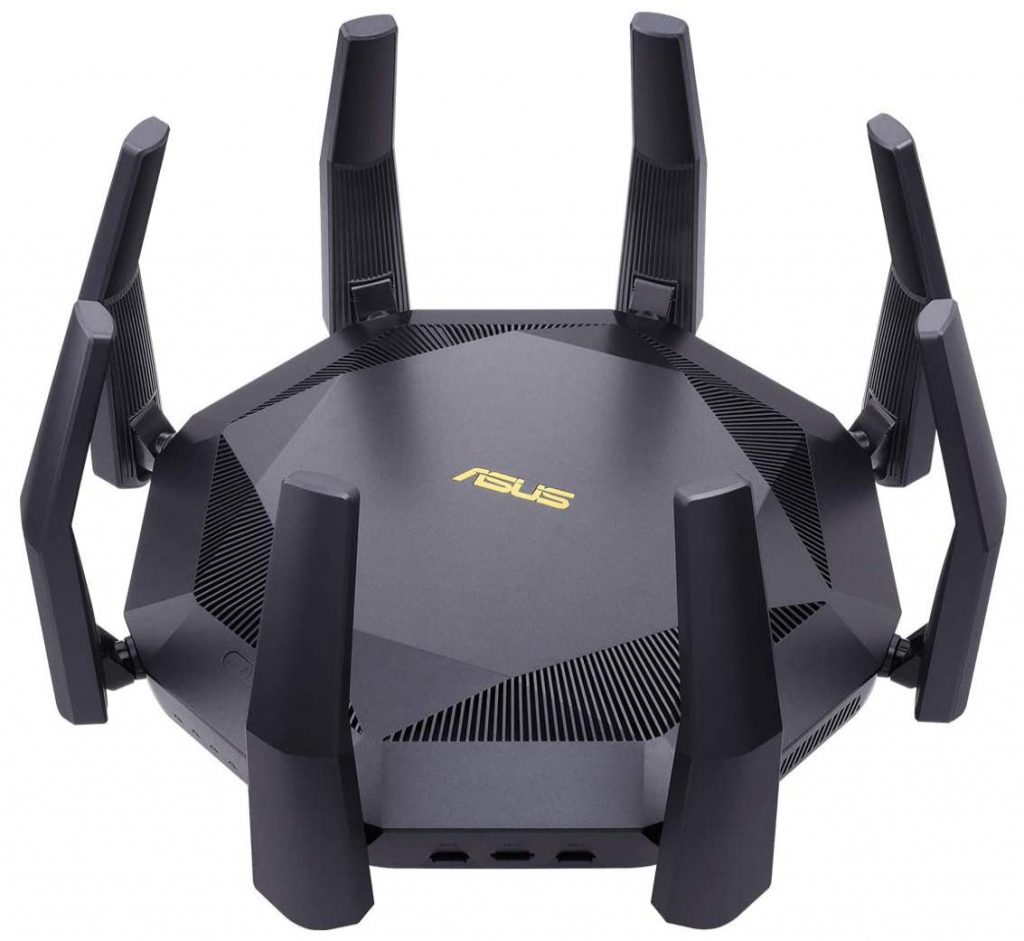
One of the best home routers money can buy. Its “arachnid” design with eight external antennas and the number of ports already makes it clear that it is intended to manage high-performance networks, for any task, although the manufacturer focuses it on always present Gaming. In the section of the WLAN wireless network, the support for Wi-Fi 6 stands out, achieving an impressive bandwidth of 6,104 Mbps adding all the bands. The LAN section is just as spectacular, with two 10GbE uplinks (configurable), one 1GbE WAN uplink, and eight 1GbE LAN downlinks.
It also offers two USB 3.1 Type-A 5Gbps ports; advanced security features WPA3-Personal and WPA2-Enterprise and the most advanced technologies in routers. Its price is at the height of its quality and benefits and rises to 525 dollars. In return, a state-of-the-art router for many, many years. In the same link you have cheaper models like the ASUS RT-AX82U with Wi-Fi 6 for 349 dollars.
AVM FRITZ! Box 7590
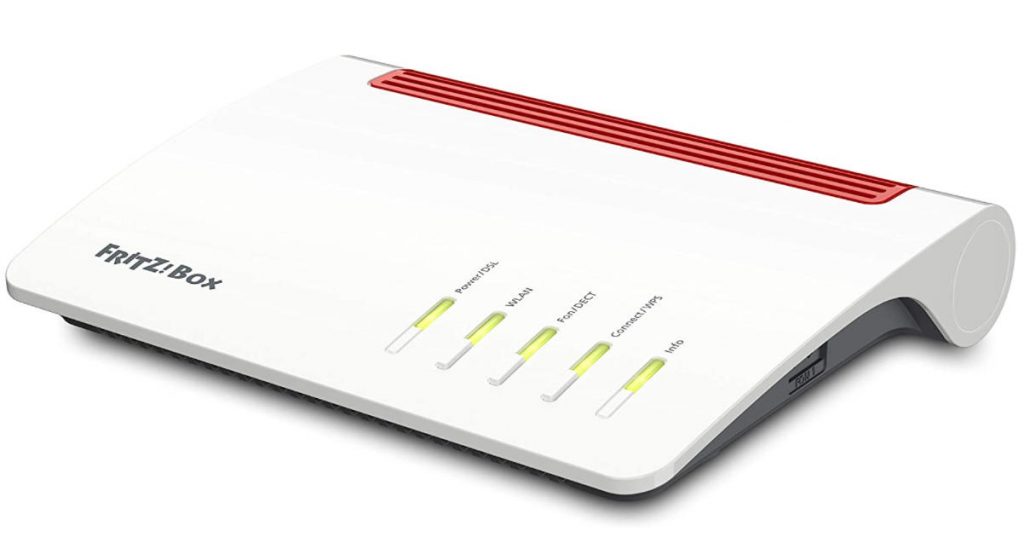
One of the best routers of this prestigious German manufacturer. It offers dual band 4 × 4 Wi-Fi 4 and Wi-Fi 5 with multi-user MIMO for a combined performance of 2,533 Mbps. It has four Gigabit LAN ports and 2 USB 3.0 ports, one Gigabit WAN port compatible with cable or fiber modems optical and two connections for analog telephones or fax.
It is ready to work with the latest technologies in the sector, including Wi-Fi Mesh; DECT telephony for telephones and home automation applications; parental control functions; multimedia server; FRITZ! Nas, wireless guest access and application support FRITZ! Apps built into a well-supported ecosystem with the FRITZ! OS operating system at the forefront.
Netgear RAX120
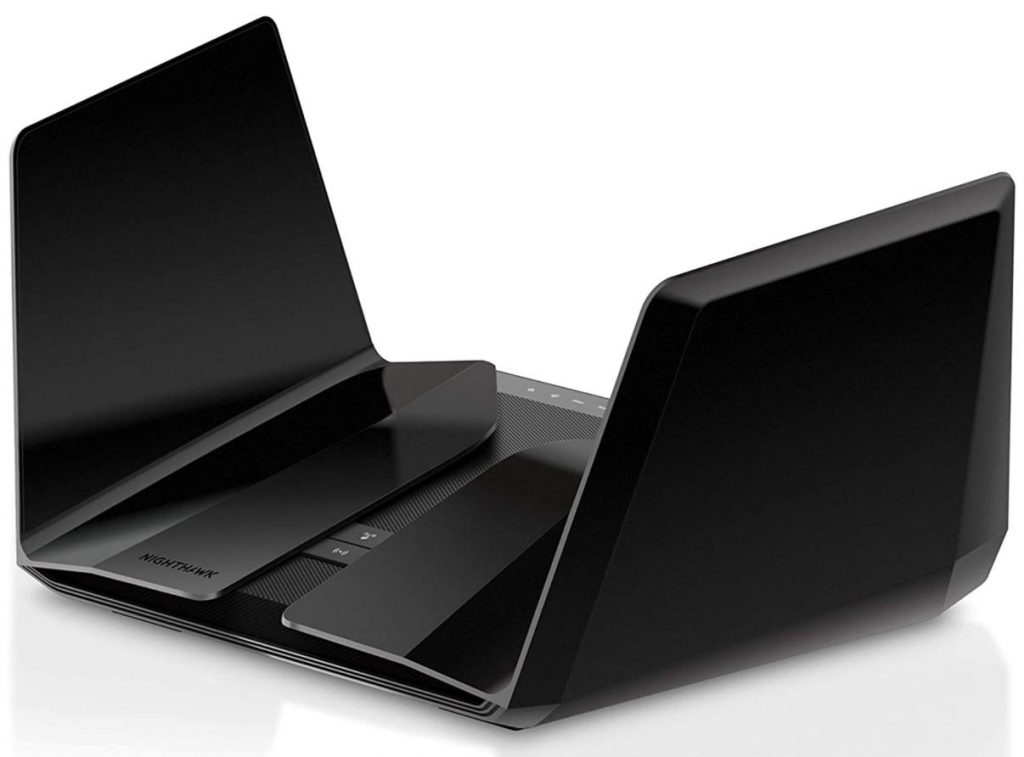
Another model, like the ASUS, top of the range in features that support Wi-Fi 6 and with the spectacular design that you see in the image. The router is designed to provide 12 connections for 60 devices at the same time. The router offers four 6GHz streams, four 5GHz streams, and four 2.4GHz streams, expanding the capacity of the networks to accommodate more devices and deliver up to 1200 + 4800 Mbps.
Its design is visible and it is very attractive at a visual level, with the external antennas covered by two panels like a Star Wars fighter … In addition to Wi-Fi, it has five Gigabit Ethernet ports with 2.5G speed, two USB ports 3.0 for external devices and all kinds of functions, Beamforming +, Smart Connect, OFDMA, Amazon Alexa voice commands and more. It is currently reduced by 23% and is priced at 499 dollars. On the same series, Netgear offers cheaper alternatives such as the AX6600 for 299 dollars.
D-Link DIR-X5460
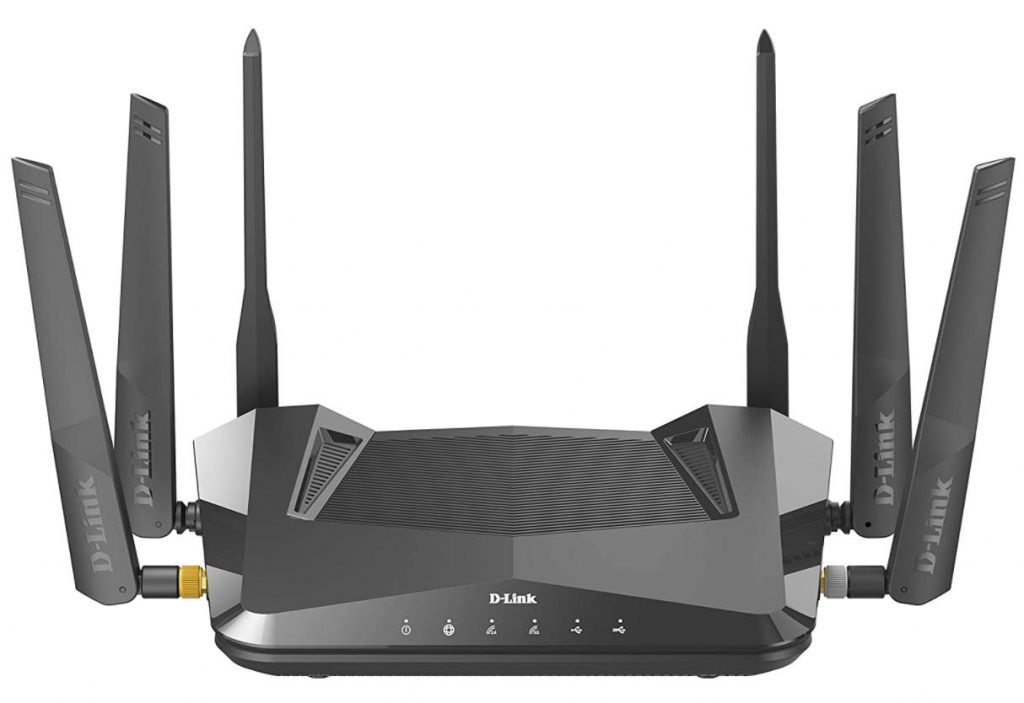
Another with Wi-Fi 6 support in this case for the mid-range of the market. It offers a total bandwidth of 5.4 Gbps (4800 Mbps + 600 Mbps) combining the combined 5400 Mbps dual band and MU-MIMO technology for simultaneous delivery to multiple connected devices. It has a Gigabit WAN port and 4 LAN and Gigabit network ports (1000 Mbps) and two USB 3.0 ports.
As the previous ones, OFDMA supports to increase the total number of devices to which it can connect simultaneously, it has a VPN assistant for virtual private networks, WPÂ 3 encryption, support for mesh networks and control from mobile devices or by control of voice with Alexa or Google Assistant. It is available with a price of 259 dollars. Content for the benefits of this mid-range.
TP-Link Archer AX6000
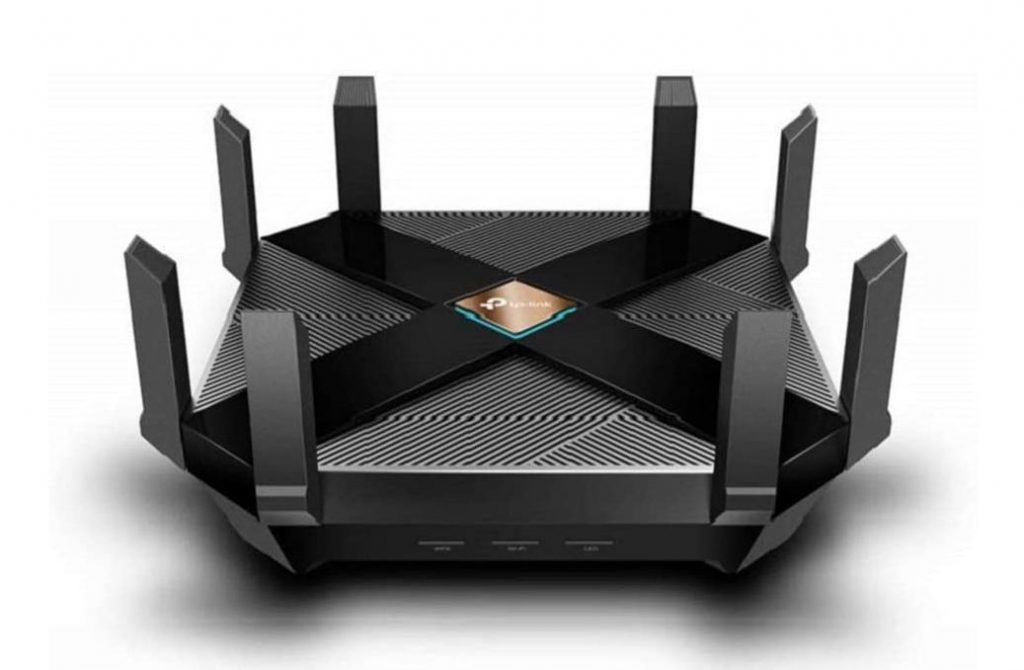
Another of the leading manufacturers of consumer network products with a vast catalog in all segments. The model we selected has a 1.80 GHz quad-core processor and 1 GB of RAM to ensure maximum performance throughout the network and supports Wi-Fi 6 to offer speeds of up to 1,148 Mbps in the 2.4 GHz and 4,804 Mbps band. in the 5 GHz band.
Very well served in the LAN section, it has a 2.5 gbps WAN port and 8 gigabit LAN ports. There is no shortage of two USB 3.1 ports, support for OFDMA and MU-MIMO upstream and downstream, and 8 high-gain external antennas that promise to boost the signal to reach the entire home. Security is powered by WPA 3 and TP-Link HomeCare software connected to a threat database updated live by Trend Micro. It is available for 282 dollars. As a similar alternative, we propose the TP-LINK Archer C5400X and if you are looking for something cheaper from this manufacturer you have what you want, because it offers Wi-Fi 5 routers of the Archer series for just 60 dollars.
Google Nest WiFi
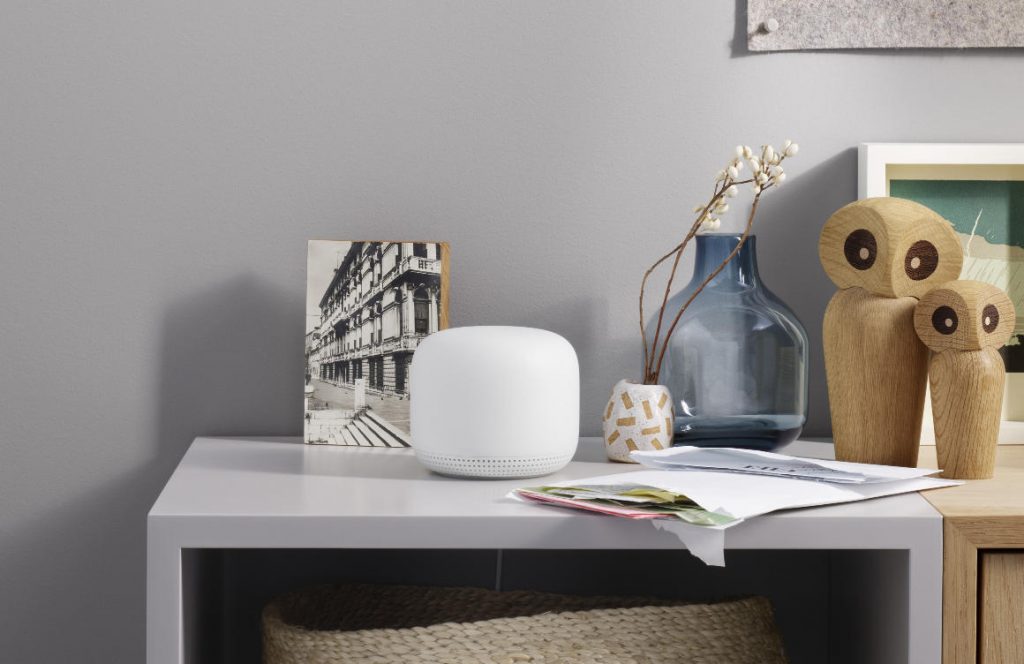
It is the latest proposal from the Internet giant to improve Internet access at home through a complete and integrated wireless network solution. Follow the steps of the original Google Wifi and improve it at all levels, including the router and the necessary access points to guarantee the best coverage at any point in the home. It works over simultaneous dual Wi-Fi 5 (2.4 and 5 GHz) and can serve 100 connected devices.
An all-in-one solution that offers what is necessary to cover the entire home, as it is a scalable system that creates a mesh network, promising a secure, stable and uninterrupted signal throughout the home. It should be noted that the Nest Wifi access point includes smart speaker functions, is connected with the Google assistant and allows you to play music, manage the Wi-Fi network, make inquiries or control other connected devices through voice commands. It is priced at 139 dollars, while the two-unit package costs 275 dollars. You can see a complete analysis in this link.
Devolo Magic 2 WiFi next
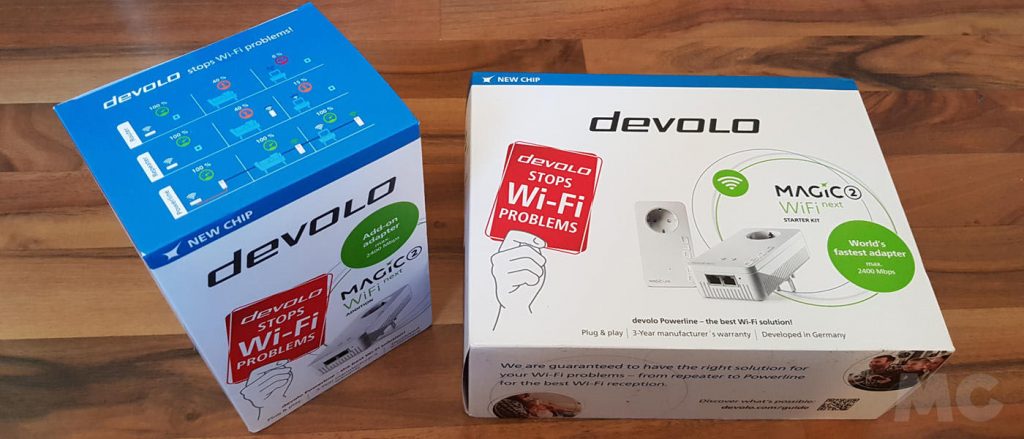
We did not want to end this special without including some of the existing alternatives with PLC technology that allows communication signals to be transmitted through the electrical installation, turning any outlet into a high-speed access point. This devolo solution supports the latest Gigabit G.hn home network standard, allows you to create Wi-Fi Mesh networks with high performance, reliability, and coverage to provide connectivity to a greater number of devices and reach any home design with individual units however extensive or complicated it may be.
Its ease of installation and use, avoiding running cables throughout the home is another of its highlights, as well as its ability to extend the local Ethernet network and its access and management software. Devolo offers this Magic solution in two versions to suit user coverage needs. In all cases, add-on adapters can be purchased to cover the size of any home or multi-story designs. You have kits on offer with 1 LAN and 1 WiFi from 175 dollars to which you can add all the adapters you need.
